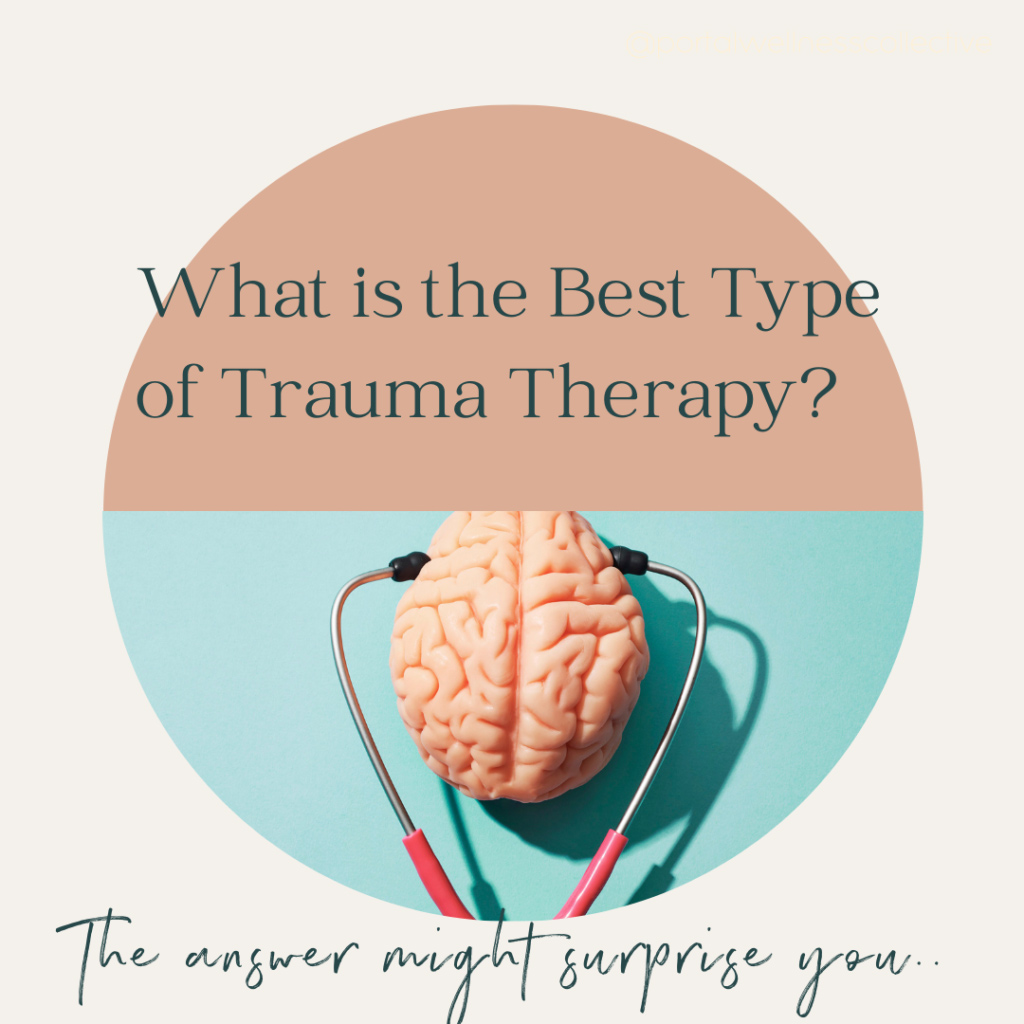Trauma can have a profound impact on an individual’s mental and emotional health, and it can be challenging to overcome its effects. Fortunately, there are various therapy modalities available that can help individuals heal and recover from traumatic experiences.
In this blog post, we’ll explore the different types of trauma therapy and what you can expect from each one.
-
Cognitive-Behavioral Therapy (CBT)
Cognitive-behavioral therapy is a type of therapy that focuses on changing negative thought patterns and behaviors that are preventing individuals from healing from trauma. CBT is often used in conjunction with other therapy modalities, as it can help individuals identify and challenge distorted thinking patterns and learn coping skills to manage their emotions. Alone CBT is not our favorite, as it tends to focus just on thoughts, when trauma is experienced in the body as well. CBT has received criticism in recent years for various reasons including bypassing the root cause or having the effect of self gaslighting. Read more about potential issues with CBT here.
-
Eye Movement Desensitization and Reprocessing (EMDR)
EMDR is a therapeutic approach that helps individuals process traumatic memories in a safe and controlled environment. It uses bilateral stimulation, such as eye movements, to help individuals reprocess their traumatic experiences and reduce the negative effects they have on their lives. However, the research around EMDR actually suggests that this modality is just as good (not better) than other types of trauma therapy. Research indicates that the reason EMDR is effective, is the same mechanism other trauma therapies tend to be effective (exposure). You can read more about the effectiveness of EMDR here.
-
Trauma-Focused Cognitive-Behavioral Therapy (TF-CBT)
Trauma-focused cognitive-behavioral therapy is a type of therapy specifically designed for children and adolescents who have experienced trauma. It uses techniques from CBT and focuses on helping individuals process their traumatic experiences and develop healthy coping skills. This method is an expanded upon version of CBT and attempts to rectify some of the original criticisms of CBT. It tends to mostly center around narrative, confronting thoughts (CBT part) and building coping skills to manage symptoms. Although this approach is more robust than CBT, it can still fall short in addressing the body experience of trauma, and is still focused on changing the thoughts associated with the trauma, which some see as a bandaid approach instead of addressing the root.
-
Somatic Experiencing (SE)
Somatic experiencing is a type of therapy that focuses on the body’s natural capacity to heal from trauma. It helps individuals regulate their physical and emotional responses to traumatic memories and experiences and improve their overall sense of well-being. Somatic Experiencing rose out of the need to address the body responses, nervous system and trauma stored in the body after trauma. This therapy is especially helpful for those who experienced sexual or physical trauma, or have done a lot of processing around their trauma but continue to experience trauma reactions. The main critique of this therapy is that it swings to the other side of the spectrum not giving enough space for the cognitive, thoughts, narrative or meaning making which is equally important in long term healing from trauma.
-
Narrative Exposure Therapy (NET)
Narrative exposure therapy is a type of therapy that focuses on helping individuals develop a coherent and meaningful narrative of their traumatic experiences. This therapy helps individuals process their trauma and reduce the negative effects it has on their lives by creating a new, more positive perspective of their experiences. Narrative Exposure Therapy attempts to blend exposure, cognitive, as well as somatic in the way we experience our stories. Clients are asked to tell drop in and describe traumatic memories (exposure) with guidance from the therapist, these stories are transcribed and read back to the client (reflection – very powerful!), processing meaning, messages and impact of that trauma follow. This is one of my personal favorite trauma therapies as I feel it combines cognitive, somatic, and processing well.
-
Lifespan Integration (LI)
Lifespan integration is a type of therapy that focuses on helping individuals integrate traumatic experiences into their overall life story. This therapy helps individuals process and make sense of their experiences, reducing the negative effects of trauma on their lives. This therapy focuses on helping your brain “file” the traumatic memories appropriately by utilizing various methods of exposure (reading a clients timeline) and memory reconstruction.
-
Internal Family Systems (IFS)
Internal family systems is a type of therapy that focuses on understanding and healing the internal conflicts that individuals may experience as a result of trauma. This therapy helps individuals identify and understand their internal experiences and emotions, allowing them to process and heal from their trauma. IFS helps us understand, have compassion for, and ultimately work with the various parts of ourself. IFS sees humans as a constellation of parts instead of a fractured whole. By learning to understand how these parts were formed, their purpose, needs and desires we are able to integrate and work with all pieces of ourself. I also really love this modality and combine it with NET to achieve spectacular results with clients.
There are emerging “brands” of trauma therapy all the time. Many of them are successful. You don’t need to worry too much about choosing the “right” one as much as you should focus on choosing a therapist who you vibe with and feel safe with. THAT is what makes the difference. Many therapists pull from a variety of modalities, it can always been good to experience multiple of them to experience impacts on different levels.

So which trauma therapy is best for you?!
Each of the above trauma therapy modalities can help individuals recover from traumatic experiences and improve their mental and emotional health. It’s important to work with a trained mental health professional to determine the best approach for your individual needs and goals. Remember, healing from trauma is a journey, and it takes time, patience, and the right support.
When you are looking to heal from trauma remember these things about the effectiveness of trauma therapy.
- You need to feel somewhat safe and connected to your therapist otherwise no modality will work as well as it could
- Effective Trauma Therapy needs to include some element of exposure to the feelings, sensations, memories and thoughts around your trauma (bummer I know, the only way out is through)
- Effective Trauma Therapy should include working with your body (the sensations)
- Effective Trauma Therapy should include building a better relationship with yourself
- Effective Trauma Therapy should include some level of processing (preferably verbal), meaning making, and reworking your own narrative (the messages you internalized from this experience)
Our therapists specialize in trauma and are here to support you. You can book a free 15 min consultation below to start your trauma healing journey.



One Response